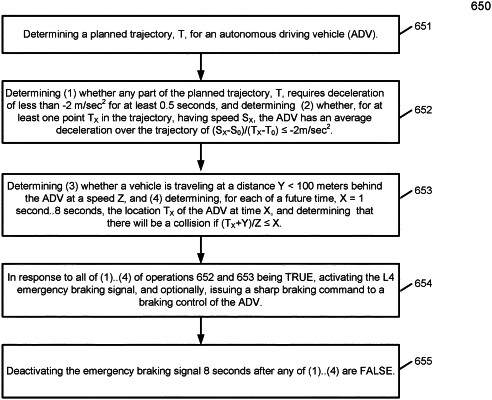| CPC B60W 60/0017 (2020.02) [B60Q 1/44 (2013.01); B60Q 1/535 (2022.05); B60W 30/09 (2013.01); B60W 30/0953 (2013.01); B60W 30/0956 (2013.01); B60W 30/18109 (2013.01); B60W 60/0016 (2020.02); B60W 2552/53 (2020.02); B60W 2554/80 (2020.02); B60W 2554/802 (2020.02)] | 21 Claims |

|
1. A computer-implemented method of activating an emergency braking signal in an autonomous driving vehicle (ADV), comprising:
determining that any part of a planned trajectory of the ADV meets a first condition, wherein the first condition requires a deceleration that is less than a predetermined deceleration threshold and lasts for at least a predetermined duration;
determining that a predicted time to a collision with an obstacle following the ADV meets a second condition, wherein the second condition requires that the predicted time to the collision is less than a predicted time threshold;
activating the emergency braking signal for the ADV, in response to determining that both the first condition and the second condition are met; and
deactivating the emergency braking signal a predetermined signal duration after at least one of the first condition or the second condition is not being met.
|